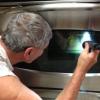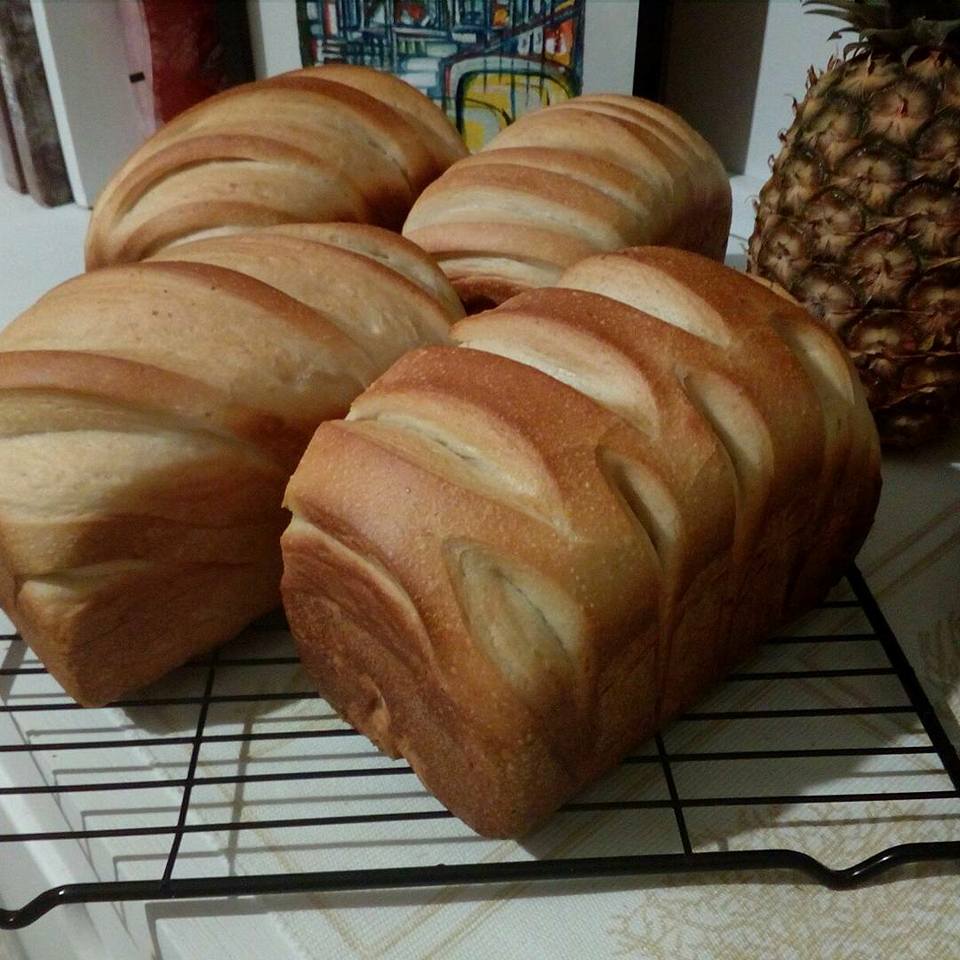
Pumpkin Sourdough

I baked this today, and it turned out great. I forgot to add the walnuts though! :-(. The recipe contains some milk powder, sugar and a small amount of butter, and the crumb is like a brioche, very soft and with distinct sour notes. The pumpkin accents the sour flavor, giving Your sourdough a twist.
Here’s the recipe (using a KA mixer):
2 hours before mixing your dough: Slice the pumpkin into chunks, boil WITHOUT SALT until soft. Use a mixer to purée and let it cool down to room temperature. I use a pressure cooker for this and it takes 4 minutes in the pressure cooker from the moment the steam valve shows until the moment you stop the cooking altogether.
Ingredients:
- AP Flour 1,000 gr
- Water 600 gr
- Salt 20 gr
- Sugar 100gr
- Butter 70 gr
- Milk Powder 50 gr
- Pumpkin Purée (Room Temp) 290 gr
- Sourdough Culture 500 gr
- Pumpkin seeds: 100 gr
- Walnuts 100 gr
Instructions:
- All ingredients in the KA bowl EXCEPT Butter AND Seeds.
- Knead on #1 speed with dough hook for 2 minutes, until mixed.
- Increase speed to #3 for approximately 7 minutes, until you see the dough coming off the walls. Adjust water / flour as required, and don’t be shy to adjust. If your dough is a shaggy mess after 2-3 minutes on #3, you’ll need a little more flour so it can come off the walls 3-4 minutes later. Check gluten and knead a bit longer if needed until you have good gluten development.
- Fold the butter in, cut in small chunks, little by little. Do not add more butter unless the previous batch is incorporated into the dough.
- Fold the nuts in. To avoid tearing the dough, you can do this by hand on a lightly floured work surface. Fold half of the nuts and make a letter fold. (4-sides), then the rest of the nuts and a second 4-side fold.
- Let it ferment at room temperature (I use a Proofer set to 25C) for one hour. You can do one Stretch & Fold after 30 minutes being extra careful that the nuts do not tear the dough.
- Chill overnight. I use a closed, oiled plastic container for this.
- Next morning take out from fridge, let sit (closed) at room temperature for one hour, then pre-shape.
- 30 minutes bench rest.
- Final shaping followed by final proofing for around 1-2 hours, depending on room temperature. In my case it’s usually closer to 2 hours.
- Bake (Steam or Dutch Oven highly recommended) at 190C for 15 minutes and an additional 10-15 minutes at 230C. I know the temperatures look wrong, especially the initial 190C. These are the ones I use. Bear in mind that the dough contains sugar and milk powder, so it can turn dark and set real fast if your temperature setting is too high.
- Take out from the oven and let it sit for at least one hour before consuming.
And some pictures..... It came out really beautiful today.



I made a beautiful boule too.....

I hope you enjoy this recipe as much as my son does (I love it as well :-). Stay safe all.





 I finally got the oven spring I was hoping for! Getting up at 3 am to bake the silly things was totally worth it! ?
I finally got the oven spring I was hoping for! Getting up at 3 am to bake the silly things was totally worth it! ?



















